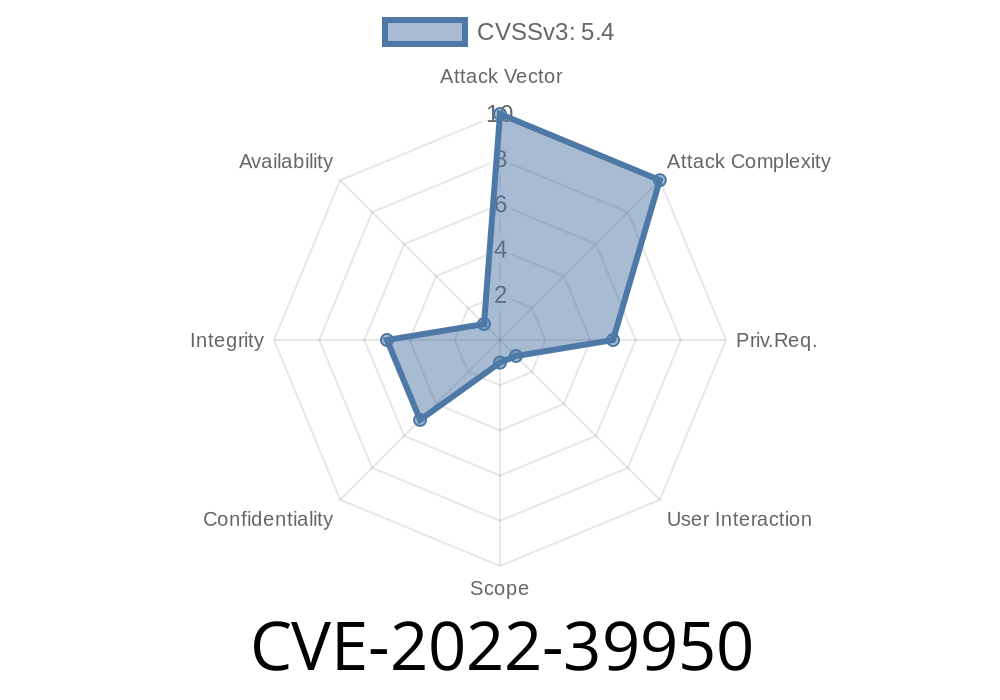The Common Vulnerabilities and Exposures (CVE) system provides a reference identifier, CVE-2022-39950 for an improper neutralization of input during web page generation vulnerability [CWE-79] discovered in FortiManager and FortiAnalyzer. The vulnerability affects a range of versions, including 6.. (all versions), 6.2. (all versions), 6.4. through 6.4.8, and 7.. through 7..4. The security flaw allows low-privileged attackers to perform a cross-site scripting (XSS) attack via a specially-crafted CKeditor "protected" comment, based on the vulnerability described in CVE-202-9281.
Exploit Details
FortiManager and FortiAnalyzer are network security and analysis systems developed by Fortinet, widely used by many organizations to manage and monitor their networks and devices. The vulnerability (CVE-2022-39950) allows an attacker to inject and execute a malicious script in the context of a vulnerable web application, specifically the report templates within FortiManager and FortiAnalyzer.
The attacker can exploit this vulnerability by posting a specially-crafted CKeditor "protected" comment, which is included in the report template and executed when the template is rendered. The code snippet below demonstrates how a malicious script can be injected into a CKeditor "protected" comment:
<!--{cke_protected}{C}%3C!%2D%2D%20%3Cscript%3Ealert(%22XSS%20attack!%22)%3C%2Fscript%3E%20%2D%2D%3E-->
This code snippet, when included in a report template, will execute the script within the comment and display an alert with the message "XSS attack!".
The vulnerability has been recognized by the following organizations and sources
1. Fortinet Advisory - FortiManager & FortiAnalyzer - Input Validation Vulnerability
2. MITRE - CVE-2022-39950
3. National Vulnerability Database - CVE-2022-39950
Mitigation
Fortinet has released patches for the affected FortiManager and FortiAnalyzer versions to address the vulnerability. Users are strongly advised to update their systems accordingly:
Conclusion
The improper neutralization of input vulnerability (CVE-2022-39950) in FortiManager and FortiAnalyzer puts organizations at risk of an XSS attack via a specially-crafted CKeditor "protected" comment. It is crucial for users to update their systems to the latest security patches provided by Fortinet to mitigate the vulnerability and protect their networks from potential attacks.
Timeline
Published on: 11/02/2022 12:15:00 UTC
Last modified on: 11/03/2022 17:50:00 UTC
